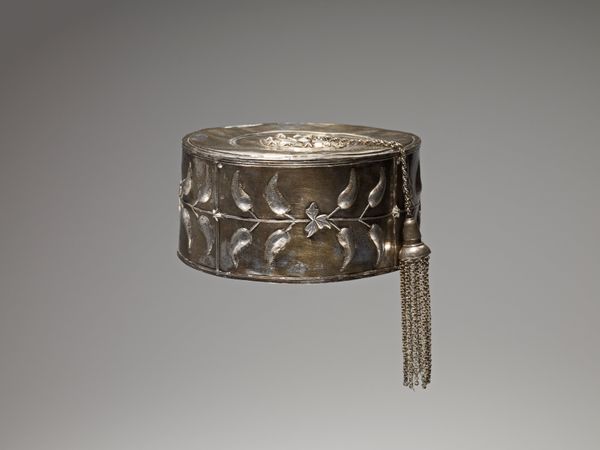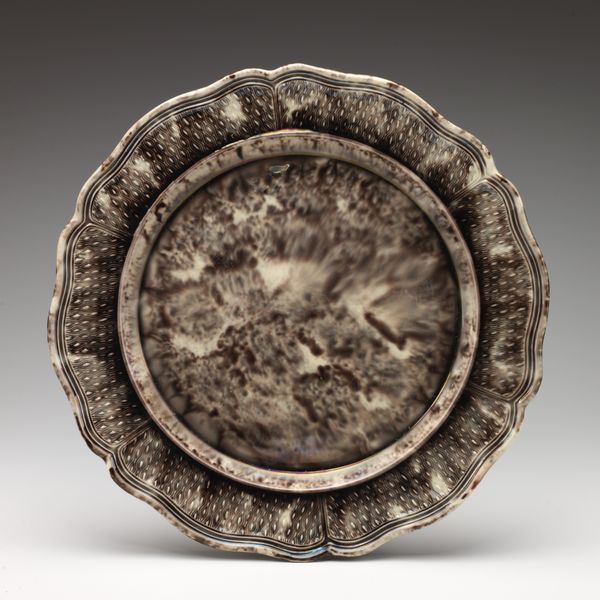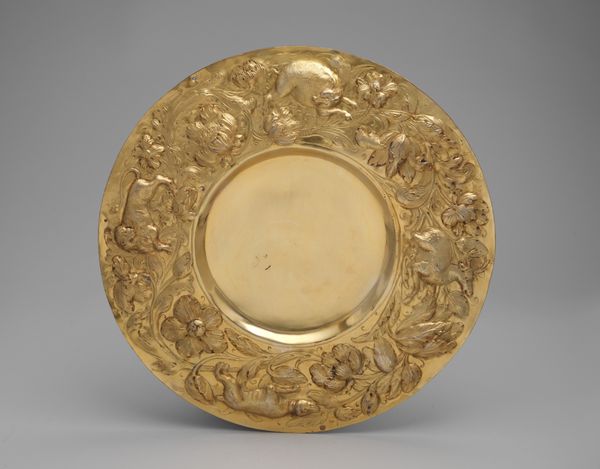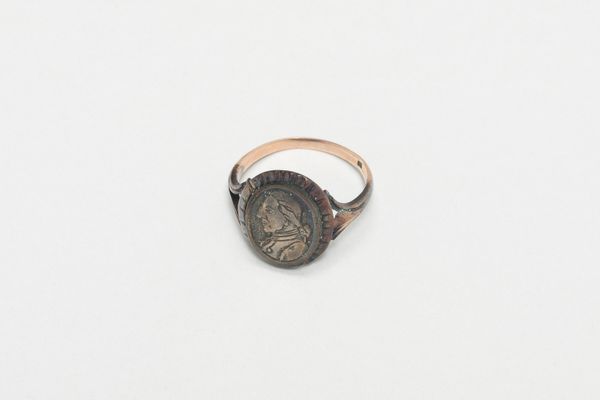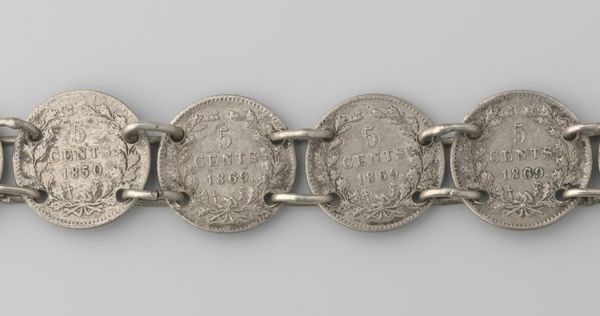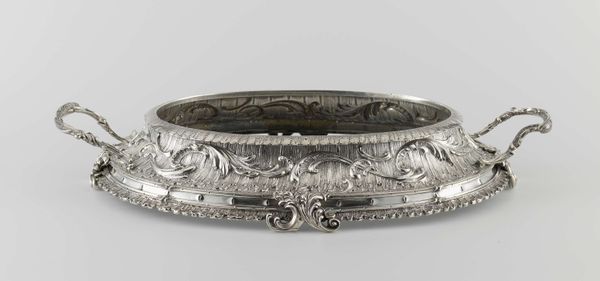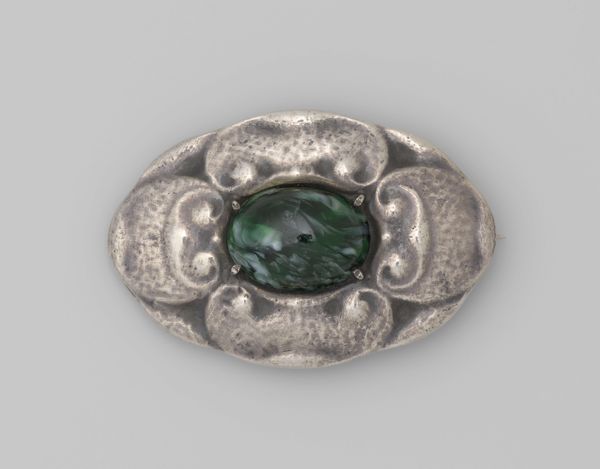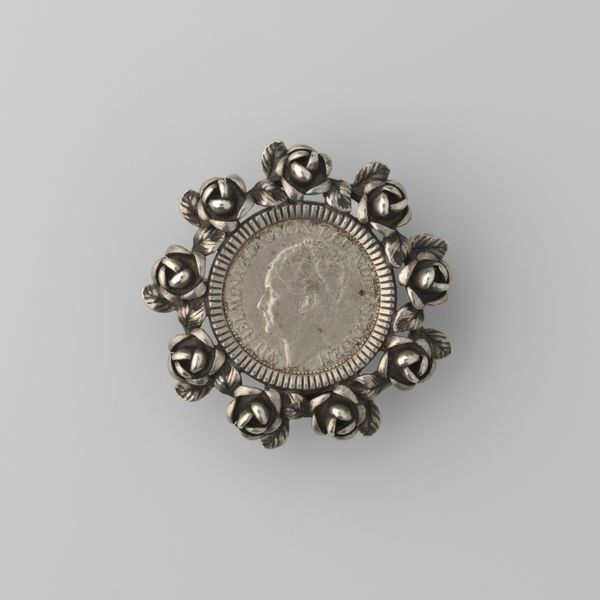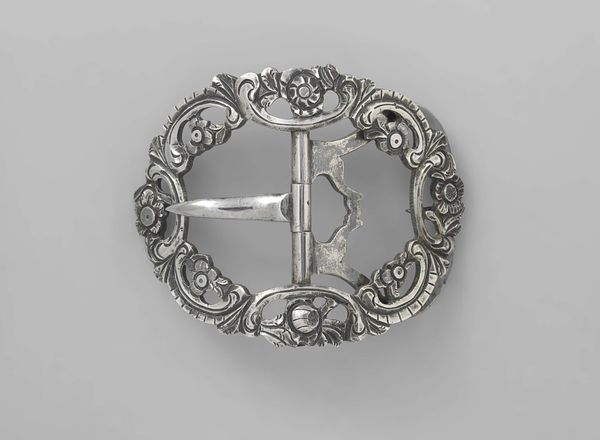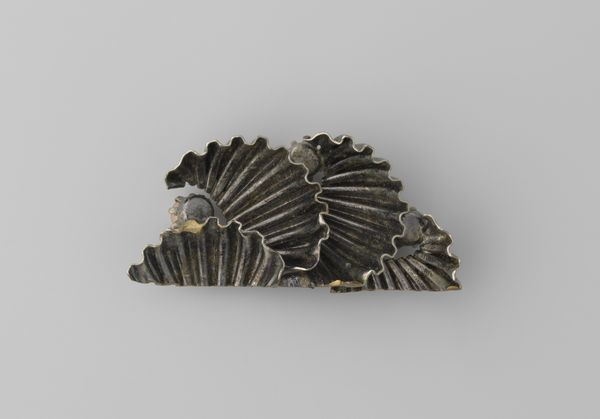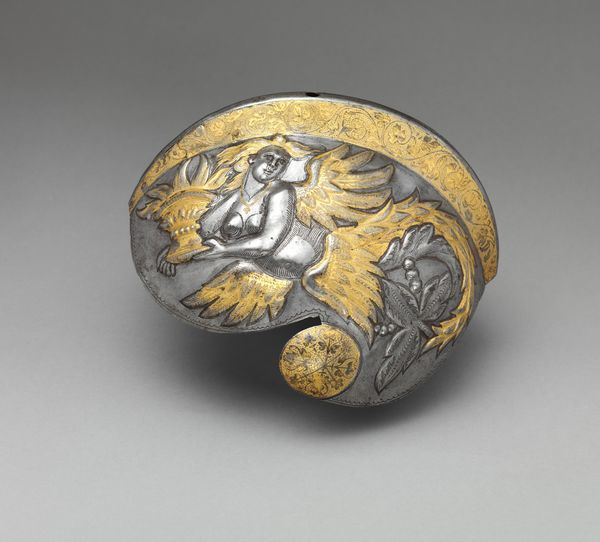
#
3d sculpting
#
3d model
#
wedding photograph
#
head
#
3d image
#
3d printed part
#
rounded shape
#
jewelry design
#
virtual 3d design
#
3d shape
#
metallic object render
#
united-states
#
profile
Dimensions: L. 2 1/2 in. (6.4 cm)
Copyright: Public Domain
Editor: This is a bracelet by George W. Shiebler & Co., made around 1880. What strikes me is the use of classical profiles—it feels almost like wearing miniature ancient coins. What do you see in this piece? Curator: The use of those profiles speaks volumes, doesn't it? It's fascinating how makers in the 19th century were constantly mining the visual vocabulary of the classical world. Why do you think they did so? Editor: Perhaps it was seen as a mark of sophistication and timelessness, connecting the wearer to a prestigious past? Curator: Exactly. It’s cultural memory made tangible. Notice how the profiles aren't just decorative; they’re presented in a coin-like form. Think about the power associated with currency and who historically controlled its imagery. The imagery on coinage legitimized power, a signal of status and authority. Editor: So, by wearing these profiles, the wearer isn't just showcasing their good taste, they're also associating themselves with those powerful figures? Curator: Precisely. It becomes a personal statement. Each carefully chosen element, from the profile itself to the metalwork surrounding it, works together to weave a rich visual narrative about the wearer. The choice to revive the classical style is a signifier, an active appropriation to indicate power. Does it shift your perception of the piece at all? Editor: It does. I hadn't thought about it as making such a bold statement about power and status. More like a pretty trinket with vintage charm! I see that it is something quite significant that allows the user to participate and be reminded about values and stories that can still resonate across time. Thank you!
Comments
No comments
Be the first to comment and join the conversation on the ultimate creative platform.
